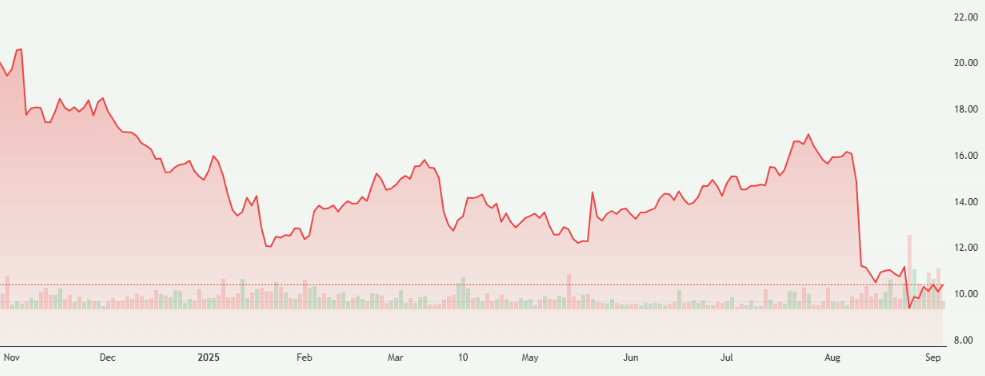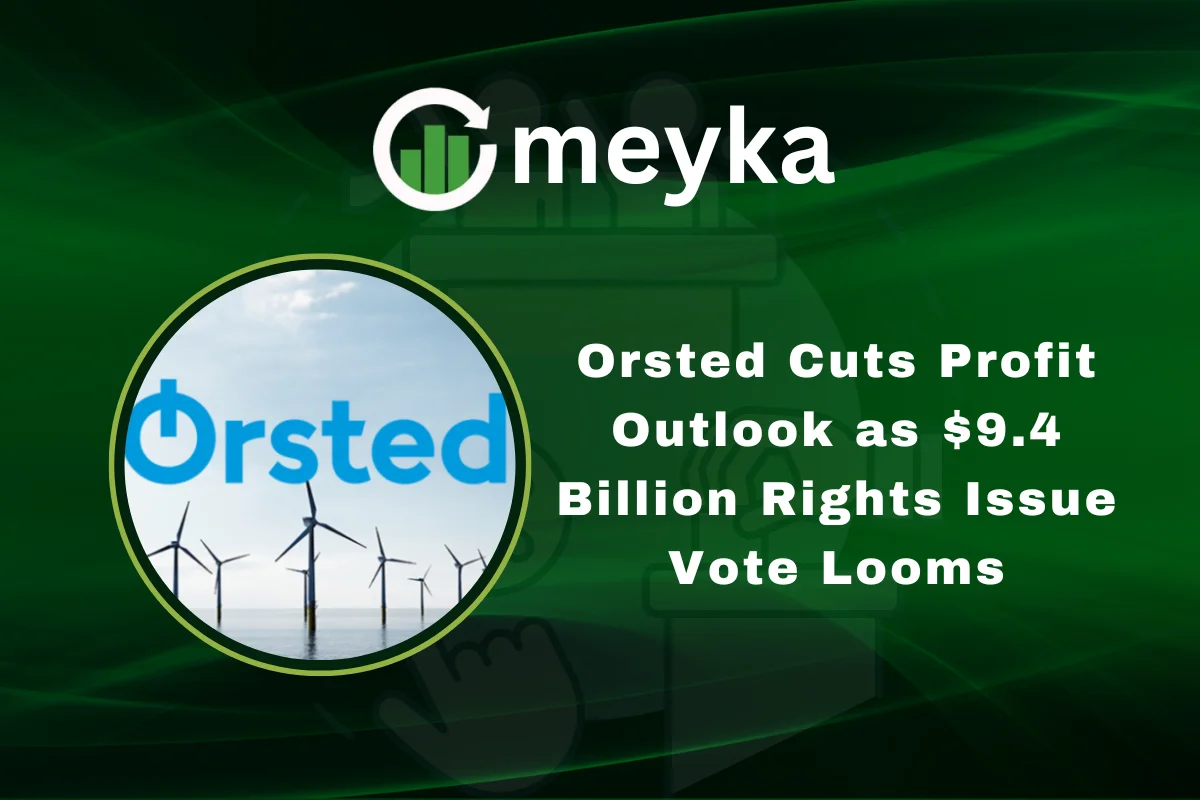Orsted Cuts Profit Outlook as $9.4 Billion Rights Issue Vote Looms
The global renewable energy leader Orsted is facing turbulent financial waters as it prepares for a crucial $9.4 billion rights issue vote. Once seen as the crown jewel of offshore wind development, the Danish company is now forced to revise its profit outlook downward, triggering concerns among investors and market analysts.
With rising costs, project delays, and investor skepticism weighing heavily, the company’s latest announcement has become a central point of discussion in the stock market and broader renewable energy sector.
Orsted’s Profit Outlook Slashed
Orsted recently confirmed that it expects a weaker-than-expected financial performance for the upcoming fiscal year. The adjustment comes as inflationary pressures, higher interest rates, and supply chain disruptions eat into project margins.
The company’s original guidance suggested stable earnings growth, but the revised forecast paints a more cautious picture. Analysts point to delayed offshore wind projects in the United States and Europe as a major contributor to the weaker outlook.
This development puts additional focus on the upcoming rights issue vote, where shareholders will decide whether to approve the $9.4 billion fundraising plan designed to stabilize the company’s balance sheet and support future growth.

The Rights Issue Explained
A rights issue allows existing shareholders to purchase additional shares at a discounted price. For Orsted, this move aims to raise capital quickly and reduce debt, ensuring the company maintains financial flexibility for its ambitious offshore wind pipeline.
However, the timing of this rights issue is critical. Market sentiment toward renewable energy firms has been under pressure due to rising interest rates and competition from traditional energy companies. Investors are questioning whether Orsted can deliver long-term returns despite short-term financial setbacks.
If approved, the rights issue will become one of the largest in Europe’s energy sector in recent years, underscoring the magnitude of Orsted’s financial restructuring.
Stock Market Reactions
The announcement has triggered sharp stock market volatility for Orsted shares. Investors remain divided: some see the capital raise as a necessary step to secure future growth, while others view it as a sign of financial weakness.
Stock research reports highlight that Orsted’s long-term fundamentals in renewable energy remain strong, but the company must demonstrate that it can control costs and deliver projects on schedule.
Interestingly, parallels are being drawn with AI stocks, which also face the dual challenge of high capital investment and uncertain profitability. Both sectors are highly dependent on innovation, government policy, and long-term investor confidence.
Challenges Facing Orsted
Orsted’s challenges are not unique but highlight broader structural issues in the renewable energy industry:
- Rising Costs: Inflation has increased the price of turbines, materials, and labor.
- Supply Chain Bottlenecks: Global shortages in key components have delayed several offshore wind projects.
- Policy Uncertainty: Shifts in U.S. and European energy policy create unpredictability for long-term planning.
- Capital-Intensive Projects: Offshore wind requires billions in upfront investment, making financing crucial.
For Orsted, these pressures have been particularly acute given its aggressive global expansion strategy. The company has invested heavily in the U.S. offshore wind market, but delays and cost overruns have dampened investor enthusiasm.
The Bigger Picture: Renewable Energy Outlook
Despite its current struggles, Orsted remains a global leader in renewable energy. The company’s expertise in offshore wind makes it a critical player in the transition toward a low-carbon economy.
Governments worldwide continue to push for more investment in green energy, and Orsted’s pipeline of projects across Europe, Asia, and North America positions it well for future growth. However, the path forward requires navigating financial headwinds and restoring investor confidence.
The renewable sector itself faces growing competition, as oil majors like BP and Shell expand into offshore wind and solar. This competitive landscape means that Orsted must deliver efficiency, scale, and innovation to maintain its market leadership.
Investor Outlook and Stock Research
For investors, the upcoming rights issue presents both risks and opportunities. Those who participate may benefit from discounted shares if Orsted successfully stabilizes its finances and executes its project pipeline.
Stock research firms caution, however, that short-term volatility will likely continue until there is clarity on how the rights issue proceeds. Long-term investors may still view Orsted as a valuable asset, particularly as governments double down on renewable energy commitments.
The company’s ability to regain market trust will hinge on how it manages costs, executes delayed projects, and communicates its strategic vision.
Comparisons with AI Stocks and Growth Sectors
The current situation with Orsted mirrors the dynamics seen in AI stocks, where companies face massive upfront costs and uncertain near-term profits. Investors in both sectors are betting on long-term transformative growth rather than immediate returns.
AI and renewable energy are considered cornerstones of the future economy, attracting capital despite short-term challenges. However, investors must carefully analyze risks, market conditions, and the financial health of individual companies.
Conclusion
The coming weeks will be decisive for Orsted. The $9.4 billion rights issue vote will determine whether the company can secure the capital it needs to weather financial headwinds and sustain its global expansion in renewable energy.
While the revised profit outlook raises concerns, the long-term fundamentals of renewable energy remain robust. For investors and policymakers alike, Orsted’s trajectory will serve as a key indicator of how the sector can adapt to rising costs, policy shifts, and intensifying competition.
FAQs
Orsted reduced its profit outlook due to rising costs, supply chain disruptions, and delays in offshore wind projects, particularly in the U.S. and Europe.
The $9.4 billion rights issue aims to raise capital to reduce debt and support Orsted’s renewable energy project pipeline, ensuring financial stability.
Despite short-term volatility, Orsted remains a leader in offshore wind and renewable energy. Its long-term prospects depend on cost control, policy support, and project execution.
Disclaimer:
This content is made for learning only. It is not meant to give financial advice. Always check the facts yourself. Financial decisions need detailed research.






